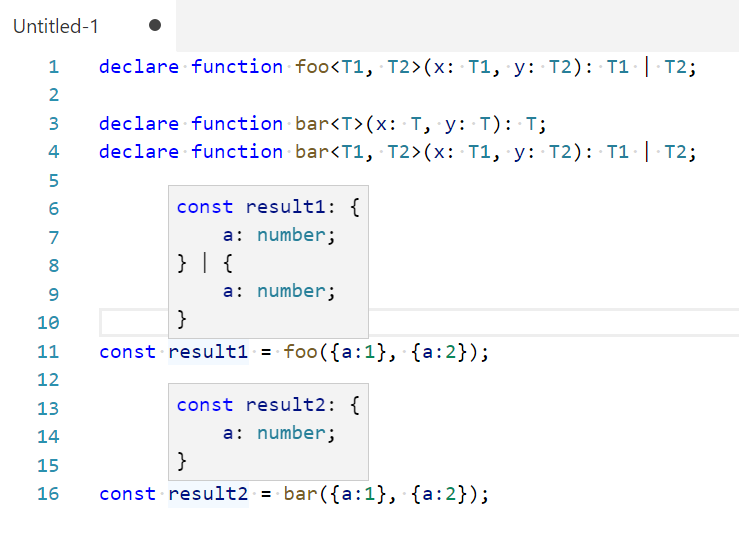Actual:  Expected: `result1` and `result2` both diplay their type as `{ a: number }` Thanks @lhecker for pointing out this problem.